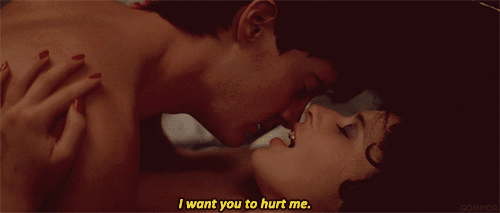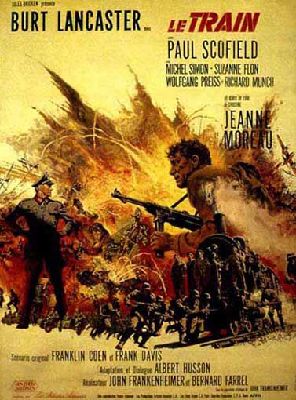Brick (Rian Johnson, 2006)
+.

I watched
Brick and although I may watch it again, I'll go ahead and post what I think about it today. I have mixed feelings. For every thing about it which seems original or inventive, there's something which seems silly or wrong-headed. For every good camera shot, there is a scene of lousy sound recording. Balancing out the two or three good performances in the flick are weak ones, especially by the
three femme fatales. Needless to say, it's an interesting watch, which probably gets better as it goes along, but just doesn't seem to add up to that much in the context of good films, let alone film noir.
This isn't going to be the most-organized post but I want to start by mentioning a few things which haven't been mentioned yet. Everybody talks about this film as somehow reflecting high school life, but the high school, while serving as a low-budget "set" for many of the scenes, is never shown at all to be a "working high school". It's something more akin to a dreamworld school. Aside from the scene in the parking lot, there are rarely any scenes with more than two characters at this school, which is actually San Clemente High School (less than an hour south of me). The scenes with more than two characters seem to involve the "actress" Kara and her lap dogs. At no time do we see a teacher, there are no classrooms shown and there are never any students walking the halls or out of class at all. This certainly helps out when you're making a low-budget flick and it fits with the noir aesthetic of having few characters in individual scenes but it certainly doesn't keep an intelligent viewer from asking why, especially when the "plot" itself is not all that absorbing or even intelligible.
The dialogue has been mentioned and it's true that some of it is directly lifted from the novel
The Maltese Falcon and Bogie's film version. These parts include "Now you are dangerous" and "Angel". It was also fun to see Brendan slapping around Dode as if Sam Spade was slapping Joel Cairo. I was a little disappointed though when Brendan did NOT say, "When you're slapped, you'll take it and like it!" Basically the dialogue is supposed to be hard-boiled, but to hear it spoken at times by people who don't even seem to comprehend what they're saying is at times disconcerting. I especially found the three lead female characters very weak in both acting and the dialogue they deliver. On the other hand, the Brain's shorthand dialogue with Brendan is believable in the context of high school friends. Even in the '60s/'70s, I would speak in a slangy way with my best friends which we alone could understand. Now, we didn't do it because we didn't want others to know what we were saying. We basically did it as a way to deepen our friendship and provide each other with little in-jokes to go with the info we were sharing. I'm just not sure how the commingling of traditional hard-boiled dialogue with specific, modern slang plays out here. Once again, I find it to be something of a schizophrenic experience.

Gordon-Leavitt is obviously the backbone of the film and makes it seem better than it probably is. He works fine as both the hero and the dupe which you need in a noir, but since he's modeled after Sam Spade and needs a "fall guy", he is depicted much stronger than say the pathetic Al character in Edgar G. Ulmer's
Detour. However, the Tug character, played complexly by Noah Fleiss, certainly grew on me. He could be hotheaded and sane all within a second so that kind of character and acting is necessary for what passes for the murder mystery plot to make sense. He's somewhat reminiscent of the Moose character in Raymond Chandler's
Farewell, My Lovely.
I realize that I'm just scratching the surface so far but I have things to do and I'm hurting again so I'll stop for awhile. My rating is
so that's probably an average rating for what I give a film noir, even though calling this a film noir is almost (but not quite) like calling
Bugsy Malone a gangster flick. They're closer to a pastiche, although
Brick obviously wants to be taken seriously since it's got a moody musical score and even includes a David Lynch set (the last photo which winter put in his original post). However, I'm not a committed noir fan. By that I mean I really love movies so I love noir but I don't automatically think more of a film just because it's noir. It still has to fulfill some basic storytelling and technical criteria, and I find
Brick borderline in some of those criteria, at least for me. It's interesting to note that director Rian Johnson graduated in 1996 from the same college (USC's School of Cinema-Television) which my daughter Sarah attended. I have no reason to not think well of him, especially since much of this film reminds me of some of the films which Sarah has directed so far, even though she's never seen it.
EDIT
Having rewatched
Brick, I'll have to correct some of my misstatements in the last post. There are scenes, especially at the beginning, where there are students (very few) in the hall for a second. There is also a scene where students are walking to buses in the front of the school. However, for the most part there is nobody much at the school except for the addition of that rehearsal (?) scene with Kara. I am guessng that most of the few people we see on campus are probably crew members "posing" as students. The sound recording problems I had with the film were mostly involving dialogue but I'll admit that since I watched it on a better system they didn't quite sound as weak as before even though I still believe that several lines of dialogue should be clearer. However, the use of sound effects is quite well-done, especially the sounds we hear of cheerleading practice, unseen lockers slamming shot, piano rehearsals and unintelligible voices signifying a crowd. My fave sound effects are those when Brendan is chased through his school by some knife-wielding punk. Those are clever and bizarre all at once.
Speaking of the beginning, it also seemed as if the plot of the film was propelled by David Lynch's "
Twin Peaks" and Stanley Kubrick's
Eyes Wide Shut. The film begins with the finding of a dead blonde high school girl. The girl's name is Emily, but she is one of the three femme fatales, and the primary one is named Laura, as in Laura Palmer, the dead girl in the Lynch opus. The next major scenes in the film seem to involve Brendan learning about a costume party and showing up without a legit invitation, a la the Tom Cruise character in
Eyes Wide Shut. Now, the fact that these plot mechanisms are used shouldn't seem strange since Rian Johnson's chief visual influences seem to be Lynch and Kubrick. The interior of the Pin's house is reminiscent of "
Twin Peaks" although it also seems to have been lit by Kubrick's lighting cameraman, especially the low-angle interior and exterior scenes. The interior shots remind me of
A Clockwork Orange and
The Shining while the exterior ones echo some in the cloudy boot camp scenes from
Full Metal Jacket. Johnson also utilizes the low-angle shooting in the dialogue scenes which John Huston used in
The Maltese Falcon to signify menacing power, especially from Sydney Greenstreet's Casper Gutman. I'm not sure what the scenes in Pin's house between him and Brendan are supposed to signify except for an homage.

I'll mention a few other things which I noticed. I'm going to say that of the three femme fatales that the one best-acted was the Em character. The Laura character is honestly the weak link to me about the movie. In the scene in the Pin's kitchen, we hear zither music, but it's not from
The Third Man. Even so, it adds some spice to the noir connection. Overall, the musical score, which I believe to be composed by the director's brother, is complex and varied, using all manner of sounds and instrumentation. The cane which the Pin uses seems to have a duck or goose head on it. [There is what looks like a swan on the wall of Vice Principal Trueman (Richard "Shaft" Roundtree.) Both Joel Cairo (Peter Lorre) and Casper Gutman (Sydney Greenstreet) in
The Maltese Falcon have canes, but this cane seems to allude to the one which "crippled" Everett Sloane used in
The Lady From Shanghai. Didn't Rita Hayworth call him a cripple before that film's famous climax? There is a scene in
Brick where Tug calls Pin a cripple during their "breakup" scene. There are also a few scenes which reminded me of Hitchcock, including one when the fight breaks out at the Pin's house. The powwow is in the basement but the fighting is above them and the camera prowls around the ceiling and we hear disturbing sounds above which sound like the impending doom at the climax of
The Birds. There is also a scene where the camera slowly zooms into the tunnel where the body of Em is found which is reminiscent of many Hitch (and Kubrick, for that matter) scenes.
I would have to say that overall I probably think a little more of
Brick than I dd the first viewing but not by much. It still seems overlong to me and too many parts of the plot seem to be placed where they go because it's a noir rather than a straight-up mystery. Unless a noir has some tremendous plot twists, like
The Maltese Falcon, The Third Man and
Chinatown, it usually stands or falls on the strengths of the Dupe/Hero and the Femme Fatale. I think the "detective" is strong here but he can't always carry the femme fatales in this instance. I still think it's worth a watch but compared to the other films I watched this weekend, I find it to be the weakest, least entertaining so I can't really raise my rating above a
+.









 .)
.)





